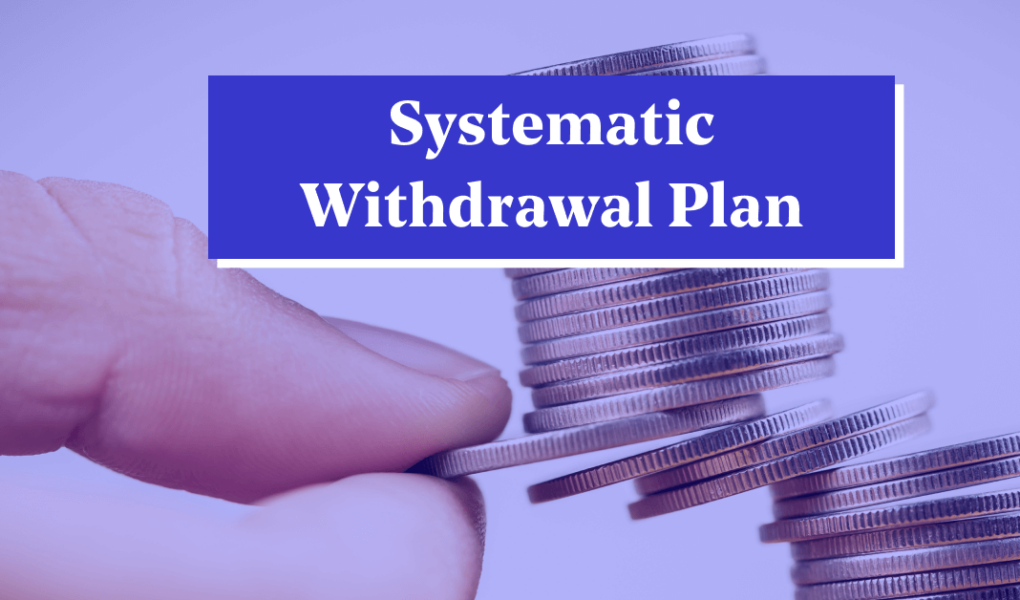Systematic Withdrawal Plans (SWPs) offer a flexible and efficient way for investors to regularly withdraw a fixed amount from their mutual fund investments. Unlike lump sum withdrawals, SWPs allow investors to tailor their cash flow needs, making it a valuable tool for generating a steady income while continuing to benefit from the growth of the remaining investment. In this article, we will explore how you can use SWP to make your investment in mutual funds in India more beneficial and how it helps you meet both short-term liquidity needs and long-term financial goals.
What is an SWP?
A Systematic Withdrawal Plan is a method by which investors can withdraw a fixed sum of money from their mutual fund investment at regular intervals (monthly, quarterly, or annually). It’s essentially the opposite of a SIP (Systematic Investment Plan), where you invest a fixed amount regularly. With an SWP, the investor decides how much money they wish to withdraw and the frequency of the withdrawals.
SWPs are especially useful for those looking for a steady income stream, such as retirees, while keeping their money invested in the market. The remaining invested amount continues to grow, thanks to the potential returns from the mutual fund, allowing investors to balance income generation with capital appreciation.
Benefits of using an SWP
1. Regular income stream
One of the most important benefits of an SWP is that it provides a regular and steady income stream. For individuals who have invested in mutual funds in India and want to start drawing money without completely liquidating their investment, SWP offers a flexible option. This is particularly beneficial for retirees who need regular income to meet daily expenses or for individuals looking for a source of passive income without withdrawing the entire corpus at once.
2. Customisable withdrawals
SWPs are highly customisable, allowing investors to choose the frequency and amount of withdrawals. You can decide to withdraw on a monthly, quarterly, or annual basis, and the amount can be fixed according to your needs. This flexibility allows you to align your withdrawals with your financial needs, making it easier to plan for both short-term and long-term goals.
3. Tax efficiency
SWPs offer a tax-efficient way to withdraw money from your mutual fund investments. Instead of withdrawing the entire investment, where the gains would be subject to significant taxation, SWPs spread out the withdrawals over time. In an equity mutual fund, if your investment has been held for more than one year, the gains on each withdrawal are considered long-term capital gains (LTCG) and are taxed at 12.5% for amounts above Rs. 1.25 lakh. This can be more tax-efficient than other income sources like fixed deposits, where the entire interest income is taxable according to your income tax slab.
4. Capital appreciation
Unlike withdrawing a lump sum amount, using an SWP allows a portion of your investment to stay in the mutual fund, continuing to benefit from market appreciation. The remaining corpus continues to grow, helping you maximise your returns in the long run. This way, you receive regular income while still taking advantage of the growth potential of your mutual fund investment.
5. Mitigating market volatility
An SWP allows you to mitigate the effects of market volatility. Instead of withdrawing a large lump sum during a market downturn, which could lead to significant losses, SWPs enable you to withdraw in small, regular amounts. This can protect your portfolio from being heavily impacted by short-term market fluctuations. As the markets recover, the remaining investment can regain value, ensuring you don’t lock in losses unnecessarily.
How to use SWP effectively?
1. Align your withdrawals with financial goals
The first step in using SWP effectively is to align your withdrawals with your financial needs. For instance, if you are retired and need Rs. 20,000 per month for expenses, you can set your SWP to withdraw this exact amount. By doing so, you can maintain a steady flow of income without disrupting your investment.
It is essential to assess how much you want to withdraw regularly and ensure that your remaining corpus can continue to generate returns, allowing you to achieve long-term growth alongside short-term income needs.
2. Choose the right mutual fund
Not all mutual funds are ideal for an SWP. When selecting a fund, consider one with a consistent performance history and lower volatility. Equity mutual funds tend to offer higher returns over the long term but come with higher risk, making them more suitable for younger investors with a long investment horizon. Debt mutual funds, on the other hand, are relatively less volatile and provide stable returns, making them a better option for those nearing retirement or looking for consistent income.
3. Monitor your withdrawals
While SWP offers a steady income, it’s crucial to monitor your withdrawals periodically. Over-withdrawing from your corpus can deplete your investment too quickly, reducing the value of your remaining investment. It’s wise to adjust your withdrawal amount if needed, particularly if your investment grows or market conditions change. Balancing your withdrawals with your fund’s performance ensures that you don’t exhaust your investment prematurely.
4. Consider reinvestment for tax efficiency
SWPs provide the flexibility to withdraw money periodically, but for some investors, a portion of the withdrawal may not be needed immediately. In such cases, you can reinvest the withdrawn amount into another investment product, such as a fixed deposit or a short-term debt mutual fund. This strategy can help you continue earning returns on the withdrawn amount while enjoying the tax efficiency that SWP offers.
5. Start early for long-term benefits
For those looking to build a retirement corpus, starting SWP early can be a smart strategy. The longer you stay invested in mutual funds, the greater the impact of compounding on your investments. By starting your withdrawals earlier, you allow the rest of your portfolio to continue growing over a longer period, helping you build a larger corpus for the future.
How SWP compares to other investment strategies?
- Fixed deposits (FDs): While FDs offer guaranteed returns, the interest is fully taxable after a certain limit, and early withdrawals may incur penalties. On the other hand, SWP offers more flexibility and tax benefits, particularly for equity mutual funds held for more than one year.
- Dividend payouts: Some investors opt for mutual funds that provide regular dividends, but dividends are not guaranteed, and their frequency can vary depending on market conditions. SWPs, in contrast, offer a predictable income stream, giving you more control over the timing and amount of your withdrawals.
Conclusion
Systematic Withdrawal Plans are a powerful tool for investors looking to generate a regular income from their mutual fund investments while allowing the remaining corpus to continue growing. Whether you’re retired or looking for a steady source of passive income, SWP offers flexibility, tax efficiency, and control over your withdrawals.
By using SWP with the right mutual funds in India, you can balance income needs with long-term capital appreciation. As with any investment strategy, it’s important to plan carefully, monitor your withdrawals, and choose mutual funds that align with your financial goals and risk tolerance.
Disclaimer:
Bajaj Finance Limited (“BFL”) is registered with the Association of Mutual Funds in India (“AMFI”) as a distributor of third party Mutual Funds (shortly referred as ‘Mutual Funds) with ARN No. 90319
BFL does NOT:
(i) provide investment advisory services in any manner or form:
(ii) carry customized/personalized suitability assessment:
(iii) carry independent research or analysis, including on any Mutual Fund schemes or other investments; and provide any guarantee of return on investment.
In addition to displaying the Mutual fund products of Asset Management Companies, some general information is sourced from third parties, is also displayed on As-is basis, which should NOT be construed as any solicitation or attempt to effect transactions in securities or the rendering any investment advice. Mutual Funds are subject to market risks, including loss of principal amount and Investor should read all Scheme/Offer related documents carefully. The NAV of units issued under the Schemes of mutual funds can go up or down depending on the factors and forces affecting capital markets and may also be affected by changes in the general level of interest rates. The NAV of the units issued under the scheme may be affected, inter-alia by changes in the interest rates, trading volumes, settlement periods, transfer procedures and performance of individual securities forming part of the Mutual Fund. The NAV will inter-alia be exposed to Price/Interest Rate Risk and Credit Risk. Past performance of any scheme of the Mutual fund do not indicate the future performance of the Schemes of the Mutual Fund. BFL shall not be responsible or liable for any loss or shortfall incurred by the investors. There may be other/better alternatives to the investment avenues displayed by BFL. Hence, the final investment decision shall at all times exclusively remain with the investor alone and BFL shall not be liable or responsible for any consequences thereof.
Investment by a person residing outside the territorial jurisdiction of India is not acceptable nor permitted.
Disclaimer on Risk-O-Meter:
Investors are advised before investing to evaluate a scheme not only on the basis of the Product labeling (including the Riskometer) but also on other quantitative and qualitative factors such as performance, portfolio, fund managers, asset manager, etc, and shall also consult their Professional advisors, if they are unsure about the suitability of the scheme before investing.




